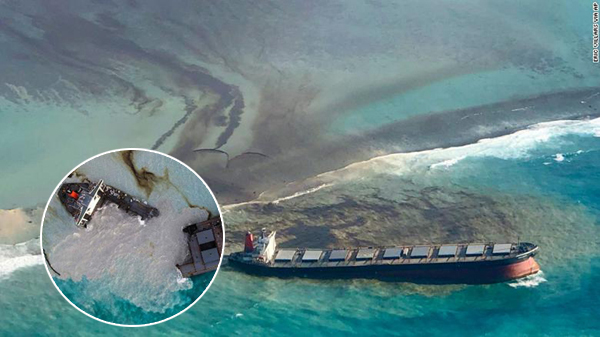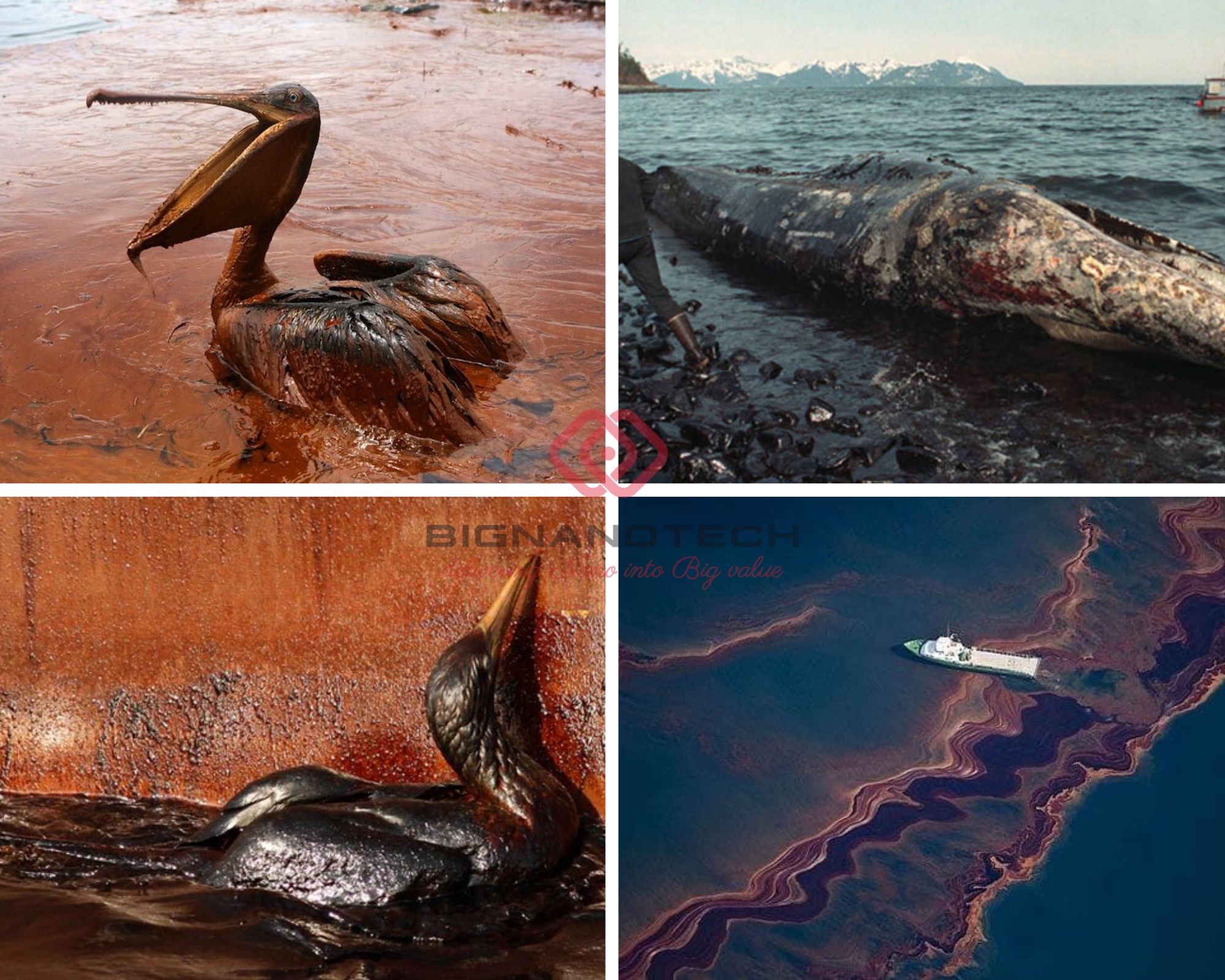Prevention, response and remediation of environmental incidents (ENVIRONMENTAL EVENTS) is an important regulation specified in Section 3, Chapter X of the Law on Environmental Protection 2014 and many other provisions such as regulations on environmental protection planning, strategic environmental assessment (SEA), environmental impact assessment (EIA), environmental protection plan, waste management, environmental monitoring, assessment of the load capacity of the environment, with the objective of prevent pollution and prevent ENVIRONMENTAL PROBLEM. These are important provisions that govern all provisions of the Law on Environmental Protection 2014.
According to the concept of ENVIRONMENTAL ERROR, storms, floods, chemical incidents, fires, oil spills can all be considered ENVIRONMENTAL INCTIONS and all of these types of incidents have mechanisms to prevent, combat and respond. . However, the practice of the recent ENVIRONMENTAL Incidents shows that the regulations and mechanisms on prevention, response and remediation of ENVIRONMENTAL PROBLEMS have not been effective due to the provisions of the Law on Environmental Protection. The school year 2014 is still not specific, not including measures to prevent. .
Therefore, the amendment and supplementation of regulations on prevention, response and remediation of ENVIRONMENTAL PROBLEMS is an important issue that affects other regulations of the Law on Environmental Protection 2014, from which the current shortcomings can be overcome.
Prevention of environmental problems:
In order to prevent ENVIRONMENTAL PROBLEMS, Article 108 of the Law on Environmental Protection 2014 stipulates on the responsibilities of production and business establishment owners in preventing ENVIRONMENTAL PROBLEMS with measures such as: Planning prevention and response; installation of equipment, tools and means of response; training, coaching and building up on-site forces to respond to ENVIRONMENTAL EVENTS; implement regular inspection regime, apply safety measures as prescribed by law; take measures to eliminate the cause of ENVIRONMENTAL PROBLEM when detecting signs of ENVIRONMENTAL PROBLEM. In addition, the Law on Environmental Protection 2014 also has other provisions on measures to prevent ENVIRONMENTAL ACCIDENTS such as planning for environmental protection, SEA, EIA, waste management, assessment of the load capacity of the environment; announce river sections, rivers no longer capable of receiving waste; determine the quota for discharge of wastewater into the river; environmental protection plan; environmental insurance, deposit for environmental rehabilitation and restoration, technical regulations on environment; environmental monitoring; publicize environmental information; inspect, examine and control environmental protection activities. As can be seen, these are important regulations that play a role in deciding the location and technology of the project, controlling the discharge, monitoring the operation of the facility, to minimize environmental pollution. or ENVIRONMENTAL PROBLEM.

However, these regulations, especially those in Article 108 of the Law on Environmental Protection in 2014, are not specific and do not cover all measures to prevent ENVIRONMENTAL ACCIDENTS. Therefore, measures to prevent ENVIRONMENTAL PROBLEMS need to be further studied with the following contents: Identify a list of occupations that are likely to cause serious environmental pollution, or have potential risks of ENVIRONMENTAL PROBLEM to take appropriate behavioral measures for each project, production and business establishment in that industry or trade. This behavior needs to be standardized to intervene right from the planning stage of production and business zoning of industries, trades, and waste zoning to requirements in EIA, environmental management plan, environmental protection plan; take special monitoring measures during production and business and take measures to respond if ENVIRONMENTAL PROBLEMS occur. Applying best possible technology (BAT) to achieve many goals, including waste reduction through the use of best available technology in relation to the capacity of the manufacturing facility, the business business with environmental protection requirements to achieve the highest efficiency. The use of BAT does not require the application of any specific technique and technology, but only takes into account technological characteristics, geographical location, environmental conditions, technical feasibility and cost of application.
Therefore, it is necessary to define the application process, priority order and specific mechanism when business and production establishments apply BAT. Applying environmental audit to assess the compliance with the law on environmental protection of production and business establishments. At the same time, obtain tools to study and examine environmental documents, data and reports of production and business establishments within a certain time in order to detect errors and violations in environmental protection activities. environmental protection of production and business establishments. Through environmental audit, with the assessment of production factors (input, output, taking into account the loss to monitor discharge activities) will provide authentic evidence of pollution, as well as ENVIRONMENTAL PROBLEMS of production and business establishments. This is an important tool to determine responsibility for environmental damage compensation, criminal prosecution for organizations and individuals that cause acts of ENVIRONMENTAL PROBLEM.

Determining the relationship between the general national technical regulations on waste and the national technical regulations applicable to each industry, the type of production and business in the direction of specific regulations must have higher requirements ( stricter) general standards, or decentralize the local authority to develop local standards applicable to each industry, type of production and business in the locality. Transparency of information about the environment and the results of environmental audits is an important basis to limit violations of regulations on environmental protection, control illegal discharge activities that potentially cause ENVIRONMENTAL PROBLEMS. SCHOOL through the supervisory role of the community and state management agencies. At the same time, enhance the role of the community, social organizations, government fee organizations, and press agencies in monitoring environmental protection activities. This is an important and effective monitoring channel in controlling environmental protection activities.
Regulations on training, drills and drills on prevention and response to ENVIRONMENTAL EVENTS. Due to the ENVIRONMENTAL Incident occurring unexpectedly, complicatedly, unpredictably, easily causing confusion and panic in production and business establishments, as well as the surrounding residential community, so the training, training , rehearsing for an appropriate response when an incident occurs is essential.
Currently, the mechanism to respond to incidents and natural disasters in our country is relatively complete, especially when the Government has issued Decree No. 30/2017/ND-CP stipulating incident response organization and activities. , natural disasters and search and rescue, including ENVIRONMENTAL EVENTS, should be considered in amending the Law on Environmental Protection 2014 in the direction of applying the mechanism specified in the above Decree. . However, the Decree only stipulates the mechanism for commanding, advising, training and mobilizing resources when incidents occur, but does not stipulate the nature and content of various types of incidents. The regulations on response to ENVIRONMENTAL EVENTS need to clearly define the following issues: Responding to ENVIRONMENTAL Incidents, redefining the content of the concept of ENVIRONMENTAL Incidents to avoid duplication with natural disasters, chemical incidents, oil spills, fires, etc., because these incidents have corresponding laws governing them. Accordingly, ENVIRONMENTAL FUNCTION should be defined as serious environmental degradation or change caused by wastes of production, business, or other human activities, or other impacts caused by non-natural waste. Develop criteria for classifying ENVIRONMENTAL ACCIDENTS corresponding to the handling competence of all levels in the incident and disaster response and search and rescue organization system to quickly identify the competent handling authority. , the agency competent to command, advise and perform response to ENVIRONMENTAL EVENTS.
Clearly define the roles, responsibilities and powers of MONRE and DONRE because this issue has not been fully and appropriately regulated in Decree No. 30/2017/ND-CP, and stipulates mechanisms specifically mobilizing resources to participate in response to ENVIRONMENTAL FUNCTIONS. Overcoming ENVIRONMENTAL PROBLEMS When ENVIRONMENTAL PROBLEM occurs, there will be types of damage: Environmental damage (change in the adverse direction of the ecosystem, environmental insecurity, environmental pollution, etc.) ; Civil damage (affecting people's health and safety, loss of income sources, property damage, adverse changes in places of residence and livelihoods...).
According to the principle of "polluters must pay", the person causing the ENVIRONMENTAL PROBLEM must bear all consequences caused by his/her acts such as compensation for environmental damage, compensation for civil damage. and remedy the ENVIRONMENTAL PROBLEM, or be held criminally responsible. However, the regulations to implement this principle have not been fully specified, specifically in the Law on Environmental Protection 2014, but only in principle. Therefore, the Law on Environmental Protection 2014 needs to supplement regulations to thoroughly address the above issues, specifically:
For environmental damage, the Law on Environmental Protection 2014 only stops at regulations on environmental restoration for activities of exploration, mining, underground water extraction, and restoration of damaged land environment. polluted. However, these regulations are still not specific and complete. Therefore, it is necessary to have regulations on environmental restoration, which clearly stipulate types and methods of environmental restoration such as bringing the environment back to the time when there was no incident, or renovating the environment to have a better environment. new environment, ecosystem, or simply the environment is no longer polluted… From there, determine the costs to restore the environment, compensate for environmental damage; At the same time, there are regulations to ensure the implementation of environmental restoration responsibilities such as deposit for environmental restoration, environmental insurance, community participation in environmental restoration, monitoring mechanism, organization of implementation of environmental restoration. currently restoring the environment…
For civil damage, the Law on Environmental Protection 2014 should clearly stipulate the burden of proof of the parties involved, accordingly, the victim is not obliged to prove the claim. but the person causing the ENVIRONMENTAL CASH must be obliged to prove the level of compensation.
Thus, it can be seen that, in response to the requirements of environmental protection in the new situation, the amendment and supplementation of the Law on Environmental Protection 2014 in general and regulations on prevention, response and remediation of ENVIRONMENTAL Incidents. TRUONG in particular is expected to make a big change in perfecting the legal system on environmental protection, aiming to increase the effectiveness and efficiency of state management of the environment.

